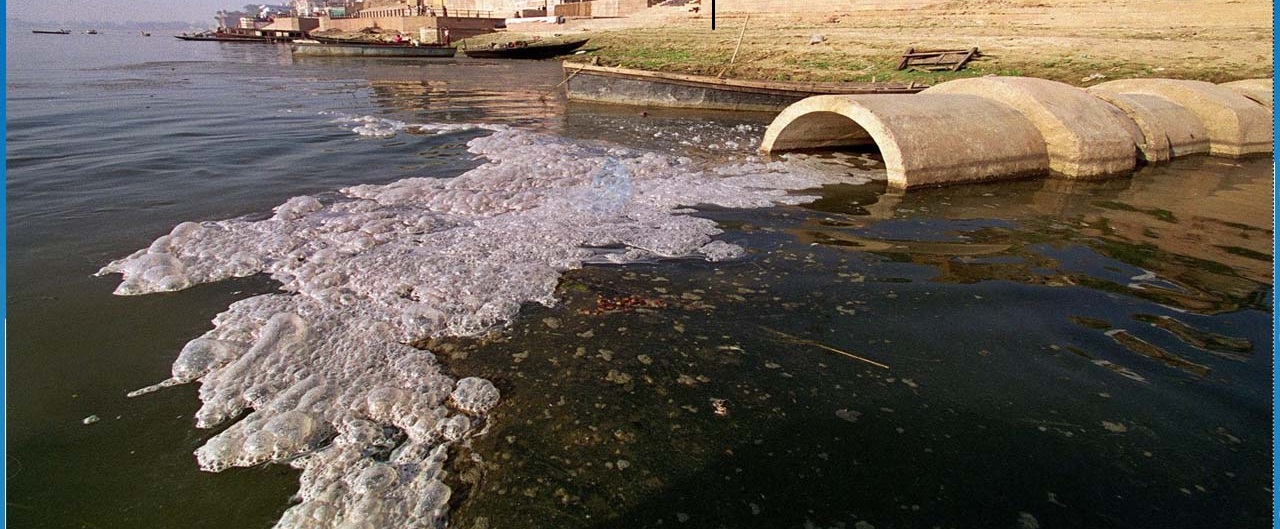India’s rural heartland, home to over 65% of the population, is grappling with a silent crisis—unsafe wastewater disposal. Villages across the country lack access to proper sewage treatment systems, leading to widespread water contamination, disease outbreaks, and environmental degradation. Traditional methods like septic tanks or open drains either do not exist or are poorly maintained. In the absence of reliable and cost-effective centralized sewage treatment, natural wastewater treatment systems emerge as a sustainable and scalable solution to this pressing challenge.
In this article, we explore the power of nature-based wastewater treatment solutions and why they are perfectly suited for solving India’s rural sanitation crisis.
1. Understanding Natural Wastewater Treatment
Natural wastewater treatment systems use biological processes, vegetation, soil, and sunlight to purify wastewater. These systems mimic natural ecosystems and require minimal mechanical or electrical input. Common types include:
Constructed Wetlands (CW)
Stabilization Ponds (Lagoons)
Soil Bio-Filter Systems
Decentralized Wastewater Treatment Systems (DEWATS)
Such systems are low-cost, low-energy, and environment-friendly, making them ideal for decentralized rural settings where infrastructure is limited.
2. Why Rural India Needs Natural Wastewater Treatment
Rural India faces unique challenges that make natural treatment methods a perfect fit:
Lack of Infrastructure
Most villages lack underground sewage pipelines, centralized treatment plants, or regular waste management systems. Constructing large, energy-intensive plants is both economically and logistically unfeasible.
High Groundwater Dependency
Rural populations rely heavily on groundwater for drinking and irrigation. Untreated wastewater seeps into the soil, contaminating these sources and causing waterborne diseases.
Affordability and Simplicity
Natural systems require low initial investment, almost zero electricity, and minimal technical expertise. Maintenance can be carried out by local communities with basic training, empowering villagers.
Climate Resilience
Natural treatment solutions are climate-adaptive and can function even during power outages, floods, or droughts—conditions increasingly common due to climate change.
3. Types of Natural Wastewater Treatment Systems Suited for Villages
Constructed Wetlands (CW)
These systems use gravel beds planted with local vegetation (e.g., cattails, vetiver grass) to filter out contaminants. As wastewater flows through the roots, microbial activity breaks down pollutants, resulting in clean water output.
Suitable for: Households, schools, small communities
Benefits: No electricity, high purification rates, landscape beautification
Waste Stabilization Ponds
Also known as oxidation ponds or lagoons, these large shallow basins treat wastewater through natural sunlight, bacteria, and algae.
Suitable for: Medium-sized villages
Benefits: Simple to construct, low cost, ideal for warm climates
Soak Pits and Leach Fields
Small-scale systems where wastewater is directed into pits or trenches filled with gravel and sand, allowing natural percolation and filtration.
Suitable for: Individual homes or toilets
Benefits: Inexpensive, easy to build, low-tech
DEWATS (Decentralized Wastewater Treatment Systems)
Combines various natural treatment modules like sedimentation tanks, anaerobic baffled reactors, planted gravel filters, and polishing ponds.
Suitable for: Clustered housing, schools, community centers
Benefits: Scalable, modular, effective in treating high volumes
4. Health and Environmental Benefits
Natural wastewater treatment has profound public health and ecological benefits:
Reduces Waterborne Diseases: Clean water reduces outbreaks of diarrhea, cholera, typhoid, and other illnesses.
Restores Groundwater Quality: Filtration through soil layers ensures safe groundwater recharge.
Supports Agriculture: Treated water can be reused for irrigation, reducing dependence on fresh water sources.
Preserves Ecosystems: Prevents the contamination of ponds, rivers, and wetlands which are lifelines for rural biodiversity.
5. Economic Advantages for Rural Communities
Investing in natural treatment systems can bring tangible economic benefits:
Job Creation: Local people can be trained to construct, operate, and maintain systems.
Savings on Health Costs: With fewer disease outbreaks, households save significantly on medical expenses.
Increased Agricultural Productivity: Using treated water boosts crop yield while conserving freshwater.
Tourism and Aesthetics: Beautified landscapes with wetlands and green spaces can attract eco-tourism and improve community morale.
6. Government Policies and Support Mechanisms
The Indian government has recognized the importance of decentralized sanitation:
Swachh Bharat Mission (SBM): Encourages safe waste disposal and village-level treatment systems.
Jal Jeevan Mission: Focuses on safe water supply and water reuse.
National Rural Health Mission: Links clean water to improved health outcomes.
However, more active promotion of natural treatment systems, along with funding, technical support, and training, is required for widespread adoption.
7. Community Participation is Key
The success of natural wastewater treatment hinges on strong community involvement:
Awareness Campaigns: Educating villagers about the link between sanitation, health, and clean water.
Local Ownership: Empowering communities to design, manage, and maintain systems builds accountability and sustainability.
NGO and Government Collaboration: Partnerships can help scale these systems across thousands of villages.
8. Case Studies of Success
Auroville, Tamil Nadu: Uses a wide range of natural systems for community-level wastewater management, including reed bed systems and ponds.
Sundarbans, West Bengal: DEWATS implemented in several villages to treat domestic sewage before releasing it into the sensitive mangrove ecosystem.
Alwar, Rajasthan: Traditional water bodies revived using natural filtration and recharge systems, restoring water security and ecosystem health.
These examples demonstrate that with the right design and community participation, nature-based solutions can thrive in India’s rural contexts.
Conclusion
India’s rural crisis around wastewater management demands innovative, inclusive, and sustainable approaches. Natural wastewater treatment systems offer an affordable, effective, and ecologically sound solution. These systems not only purify water but empower communities, restore the environment, and build resilience against climate change and health emergencies.
By rethinking our approach to rural sanitation and harnessing the power of nature, India can transform its villages into cleaner, greener, and healthier spaces—without the need for chemicals, electricity, or expensive infrastructure.

